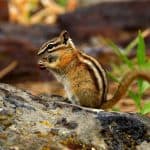Better Forest Challenge – Blue Hills
Do you love being in the great outdoors? Do you want to help protect it, just by taking photos? Then join the Better Forest Challenge – Blue Hills!
When you sign up for the Better Forest Challenge, you can share your observations of plants and animals with the Friends of the Blue Hills team on iNaturalist. As a citizen scientist, your data will help researchers and nature enthusiasts better understand the health of the forest, how climate change is affecting the forest, and how to better protect it.
How does it work?
Make Observations
Record your encounters with plants and animals here in the Blue Hills. Upload photographs along with the date, time, and location of those observations.
Improve the Forest!
How to Get Started
Step 1
Create an iNaturalist account (if you don’t already have one). This can be done on the iNaturalist website, or via the app downloaded to your phone. Remember your iNaturalist user ID! You’ll need it for step two.
Step 2
Join our Better Forest Challenge – Blue Hills project. Click on ‘projects’ in the menu on the bottom of your phone. Then search for ‘Better Forest Challenge – Blue Hills.’ Click on ‘join’ on the top of the page. And then start taking photos of the life you see in the Blue Hills, including plants, animals, insects and birds!
Ready. Set. Observe!
Once you’ve created your iNaturalist account and signed up for the Better Forest Challenge – Blue Hills, you’re ready to start making observations! This short video will show you how:
Why am I recording observations?
The Blue Hills is home to an incredible number of species. As a member of this project, you will take photos of the plants and animals in the Blue Hills. You can even record bird songs! As many people make observations of the different species, we’ll better understand:
By making observations at different times of the year and of a variety of species, you will provide the data for scientists to evaluate how climate change is changing the plants and animals in the Blue Hills. This information ultimately will help us better understand the health of the forest and identify where and how we can best protect it.
What observations should I record?
 Any wild plant, animal, insect, or fungus! If it’s an organism, observe and record it!
Any wild plant, animal, insect, or fungus! If it’s an organism, observe and record it!
Unsure of what something is? All the more reason to record it! iNaturalist’s community and image recognition software will help you identify it. Not only do your observations help the Blue Hills, they help you expand your nature knowledge as well! The iNaturalist app allows you to keep a life list of all organisms you’ve come across in your exploration, serving as a wonderful journal of your own observations here in the Blue Hills, your own neighborhood, or anywhere in the world!
What Observations should I NOT record?
While it’s extremely helpful for you to record most of the plants and animals in the park, we do ask that you do not share observations of rare species with site-specific information. Don’t worry about posting a photo of a rare species by mistake. We’ll remove photos of rare and endangered species with location information to protect those species from harm.

